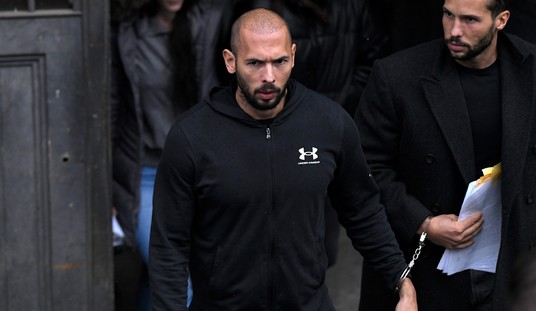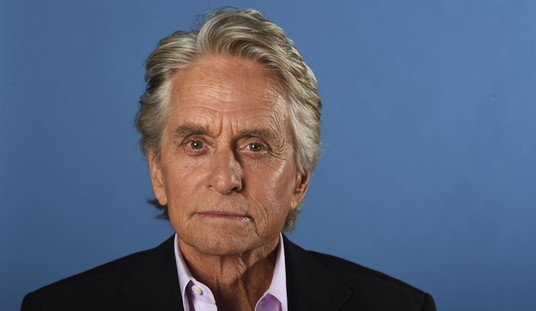Not unexpected, but this will generate plenty of controversy nonetheless. The Department of Justice declined to charge the US Capitol Police officer involved in the shooting of Ashli Babbitt, and might have even tacitly endorsed the officer’s justification for using deadly force in the January 6th riot:
Federal prosecutors will not charge a police officer who shot and killed a woman as she climbed through the broken part of a door during the insurrection at the U.S. Capitol on Jan. 6.
Authorities had considered for months whether criminal charges were appropriate for the Capitol Police officer who fatally shot Ashli Babbitt, a 35-year-old Air Force veteran from San Diego. The Justice Department’s decision, though expected, officially closes out the investigation.
Prosecutors said they had reviewed video of the shooting, along with statements from the officer involved and other officers and witnesses, examined physical evidence from the scene and reviewed the autopsy results.
The question in any police shooting is whether lethal force was reasonable and justified in the situation. Babbitt was not herself armed, but the crowd had already seriously injured law-enforcement officers in other parts of the Capitol. This part of the mob tried smashing through the barricaded doors that led to the Speaker’s Lobby, where members of Congress had sought shelter from the rioters. The DoJ’s press release describes the situation fairly dispassionately:
The investigation further determined that Ms. Babbitt was among a mob of people that entered the Capitol building and gained access to a hallway outside “Speaker’s Lobby,” which leads to the Chamber of the U.S. House of Representatives. At the time, the USCP was evacuating Members from the Chamber, which the mob was trying to enter from multiple doorways. USCP officers used furniture to barricade a set of glass doors separating the hallway and Speaker’s Lobby to try and stop the mob from entering the Speaker’s Lobby and the Chamber, and three officers positioned themselves between the doors and the mob. Members of the mob attempted to break through the doors by striking them and breaking the glass with their hands, flagpoles, helmets, and other objects. Eventually, the three USCP officers positioned outside the doors were forced to evacuate. As members of the mob continued to strike the glass doors, Ms. Babbitt attempted to climb through one of the doors where glass was broken out. An officer inside the Speaker’s Lobby fired one round from his service pistol, striking Ms. Babbitt in the left shoulder, causing her to fall back from the doorway and onto the floor. A USCP emergency response team, which had begun making its way into the hallway to try and subdue the mob, administered aid to Ms. Babbitt, who was transported to Washington Hospital Center, where she succumbed to her injuries.
Was there a reasonable fear of death or grave bodily injury, either to the officer or the people he was assigned to protect? Given the violent nature of the breach, and as demonstrated by the serious injuries sustained by other officers (including at least one maiming), it would be difficult to convince a jury that the answer was no. With a mob smashing through barricades and vulnerable members of Congress at the other end of the hall, the officer took specific aim at the first person to cross that threshold, which suggests a reasoned and limited use of force for self-defense. The DoJ at least concluded that they couldn’t argue otherwise:
The investigation revealed no evidence to establish beyond a reasonable doubt that the officer willfully committed a violation of 18 U.S.C. § 242. Specifically, the investigation revealed no evidence to establish that, at the time the officer fired a single shot at Ms. Babbitt, the officer did not reasonably believe that it was necessary to do so in self-defense or in defense of the Members of Congress and others evacuating the House Chamber.
This is how the Babbitt case differs from the Daunte Wright case, for instance. There was no reasonable fear of death or grave bodily injury on the part of the officer, who tacitly acknowledged that by deciding to use a taser for compliance. Kimberly Potter mistakenly drew her firearm, according to the video, which is both unfortunate and potentially criminally negligent. There is no self-defense claim in the Wright case.
However, it’s pretty clear that there was in the Capitol riot, or at least a reasonable case for it. The only point that one could make in rebutting this conclusion would be that it was the only lethal force actually used that day, and that once inside, none of the rioters tried to kill anyone. The laws of self-defensive lethal force are not retroactive, though. In that moment, did the officer have a reasonable fear of death or grave bodily harm from an angry mob that had already violently assaulted police officers and were busting through the barricades to get to members of Congress? It’s tough to second-guess the officer in that case — and I’d bet the members of Congress behind him at the time would testify to their own fears of imminent danger.
Some may disagree, and suspect that the Biden administration just wants to let police off the hook in order to hype the danger from the crowd. Maybe, but it’s worth noting that Biden’s DoJ isn’t enthusiastically pursuing charges against the rioters so far, either.








Join the conversation as a VIP Member